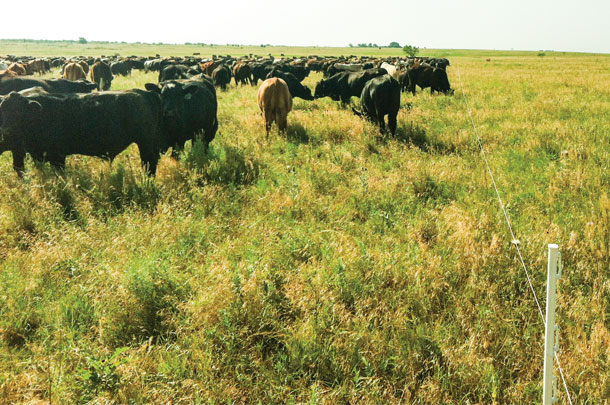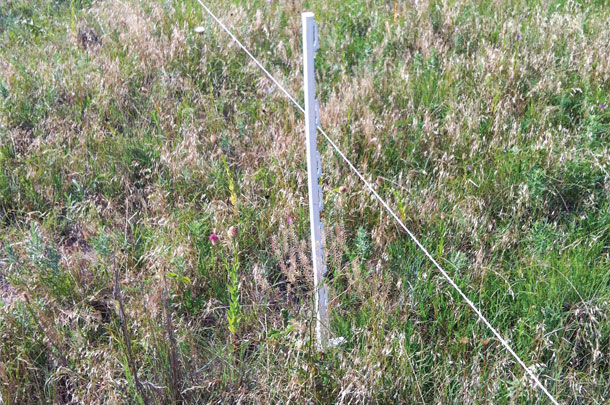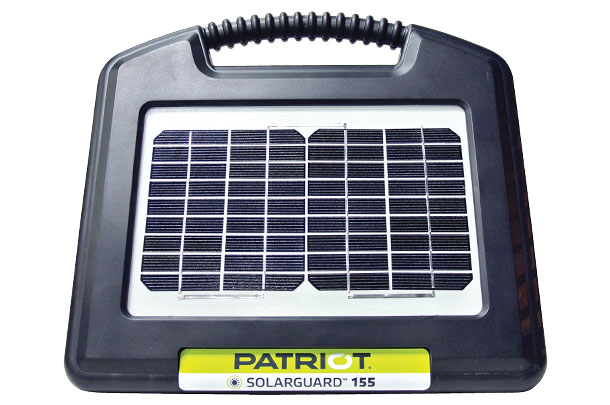Lack of management makes these pastures a poor forage source, causing ranchers to rely too heavily on supplemental feed and hay to maintain body condition of high-producing livestock. To produce good cattle feed from pasture, we must rotationally graze.
“There are basically two types of rotational grazing – deferred and short-duration,” says Barron Rector, Ph.D., Texas A&M AgriLife Extension Service. “Deferred rotation systems have been tried and tested for more than 60 years. In this type of system, half or more of the total land is grazed at any given time. The time a pasture is grazed equals or exceeds the period of rest."
"Deferred rotation grazing has proven effective at providing long-term range improvement and high animal performance, especially where combinations of livestock can be managed.
“Short-duration grazing (SDG) systems are those in which livestock are concentrated on less than half the total land area and the length of deferment periods exceed the length of grazing periods. These systems may be extensive or intensive and have been used in the U.S. since the late ’70s.”
In short-duration grazing, only one area is grazed at a time while the remainder of the ranch grassland rests. To accomplish this, pastures are subdivided into smaller areas referred to as paddocks, and cattle are moved from one paddock to another.
Resting grazed paddocks allows forage plants to renew energy reserves, rebuild vigor, deepen their root system and give long-term maximum production.

“To be successful, timing of pasture rotations must be adjusted to the growth stage of the forage,” says Dan Undersander, Ph.D., University of Wisconsin. “Short-duration grazing is practiced in a variety of intensities and can range from two to more than 30 paddocks."
"This intensive rotational grazing system involves a higher level of management with greater paddock numbers, shorter grazing periods and longer rest periods. Generally, more intense grazing management results in greater cattle production per acre.”
“One of the initial management considerations in designing short-duration grazing systems is selection and installation of the proper fencing system,” says Rocky Lemus, Ph.D., Mississippi State University.
“A good fencing design includes a combination of permanent and temporary fences. Temporary fences provide flexibility when adjusting paddock size to compensate for the number of livestock and their daily nutritional needs. A permanent boundary fence consists of woven or barbed wire, or electrified high-tensile smooth wire, and ensures that livestock are restrained on the farm and excluded from any cropland.
“The optimum number of fenced paddocks may vary with forage species, utilization and performance goals, grazing pressure, plant recovery and economic capability,” Lemus continues. “Paddocks should be sized to provide consistent days of grazing.”
Temporary fencing
Temporary fencing is one of the requirements that discourage producers from using a short-term grazing system. They feel the labor cost for constantly moving fence and the expense of materials to construct temporary fences is uneconomical.
Producers who have perfected the use of short-duration grazing systems can demonstrate that added production more than compensates for the cost. They use electric fencing specifically designed to be moved.
“Most short-term, temporary fences for cattle involve only a single strand of poly wire or poly tape attached to either plastic or steel pigtail tread-in posts,” says Brian Markwardt, fencing product manager with Tru-Test.

“Tread-in posts are installed by stepping on a small platform at the base, securing them in the ground. Wire or tape can then be easily threaded through the clips in the plastic tread-in posts or through the curled top of the pigtail posts.
“Poly wire/tape products are essentially a plastic yarn with tiny, interwoven conductors to carry the electrical current,” Markwardt continues. “These products look similar in shape and size to traditional high-tensile fence wire, only a little larger in diameter."
"Poly tape products come in a variety of widths (starting as small as a half-inch) and are more visible than poly wire. All poly products come in a variety of styles and composition. Poly wire and poly tape are also very lightweight and can be easily rolled onto a reel – making the fence easy to move from place to place.”
“An important component of any electric fence design is the ground system,” Markwardt says. “If an electric fence is not properly grounded, it will be much less effective and will not reap the maximum power of the energizer. For an electric fence to give an animal a shock, electrons must complete a circuit."
 "Electrons travel from the energizer, along the wire, through the animal’s body, through the soil to the ground system and then back to the energizer.
"Electrons travel from the energizer, along the wire, through the animal’s body, through the soil to the ground system and then back to the energizer.
“The ground system consists of a number of rods that absorb electrons in the soil. Most ground rods are made of galvanized steel and are generally 6 or 8 feet in length. In small areas with good, conductive soils, a three-foot ground rod can be used effectively. A rebar post or rusty metal pipe should never be used as a ground rod.”
Energizers convert electric power into high-voltage pulses that are released once every second to an insulated fence line. The pulse is only about 150 microseconds long.
The pulse or shock is felt by an animal when it touches an electrified fence. An electric fence is a psychological barrier rather than physical. The pain is short-lived and does not physically harm the animal. Most short-term, temporary fence applications use a solar-powered energizer because of its simplicity and convenience.
Some producers don’t want to use short-duration or mob grazing systems because they have been told the temporary fence has to be moved every day.
“Mob grazing works for me because I am flexible,” says Brett Addison, who ranches near Marietta, Oklahoma. “If I get tired, I don’t move cattle for a week. I give them an extra big pasture where they don’t have to be moved so often.”
Addison is also flexible in selecting locations for his temporary fencing. He picks the easy spots for poly wire installations and does not necessarily put the fence in the same spot every time he moves cattle to a new pasture.
Addison is quick to say, “Mob or short-term grazing might not work for every operation – but it sure works for me.”
Emry Birdwell and his wife, Deborah Clark, use a short-duration/high-intensive grazing system for their stocker operation near Henrietta, Texas. The 14,000-acre ranch is divided into paddocks that average 70 acres in size. The smallest paddock is 35 acres, and the largest is 120 acres.
Birdwell has 120 pastures cross-fenced with poly wire clipped to 3-inch PVC pipe used as temporary posts. Approximately 4,800 steers in one herd are moved three to five times per day through paddocks in at least two pastures.
“The temporary fences are moved by unclipping the wire from the posts, rolling the wire onto a reel and pulling the poles from the ground,” says Birdwell. “We then reinstall the fence in its new location. It takes one man about 10 minutes to move a temporary fence.”
Short-duration grazing offers an opportunity to ultimately increase stocking rates while conserving forage. Due to these advantages, many ranches are gradually transitioning to some type of short-duration grazing system. ![]()
Robert Fears is a freelance writer based in Texas.
PHOTO 1: A plastic post with poly wire running through the pigtail. Photo courtesy of Brian Markwardt.
PHOTO 2: Cattle will graze to an electric fence but not touch it. Photo courtesy of Robert Fears.
PHOTO 3: A single-strand, poly wire electric fence on plastic tread-in posts. Photo courtesy of Robert Fears.
PHOTO 4: A fencing energizer powered by a solar panel. Photo courtesy of Brian Markwardt.









